Matador Network's Blog, page 1061
July 8, 2019
London cheese restaurant

Aspiring vegans will find that the path to a plant-based diet is filled with another delicious obstacle: a cheese restaurant. Opening in September, the new Seven Dials Market in London will host Pick & Cheese, a restaurant with a conveyor belt full of different cheese options.
Over 25 British cheeses will be brought to your seat via the 130-foot conveyor belt, and you can try as many as you’d like. The concept is the same as the now-famous conveyor belt sushi restaurants, but this is a first in the cheese world.

Photo: The Cheese Bar – Camden/Facebook
The 38-seat restaurant will be centered around an electronic track that will showcase the various items combined with tasty condiments, such as coolea with hazelnut brittle, and fresh ricotta with sherry-infused cherries. The color of the plate will, as is tradition in conveyor belt restaurants, indicate the price.
In addition to the cheese conveyor belt, you can also partake in charcuterie tasting flights and hot meals like the traditional grilled cheese sandwich. Usually, ordering a grilled cheese sandwich at a restaurant comes with pretty low expectations, but this place will probably hold the classic staple to a higher standard.
After your entrees, you can satisfy your sweet tooth with cheese-flavored soft-serve ice cream that you’ll be able to wash down with natural, organic wine. 

More like this: This Norwegian cheese is officially the best in the world
The post London’s new restaurant will serve cheese on a conveyor belt appeared first on Matador Network.

Orange seagull covered in spices
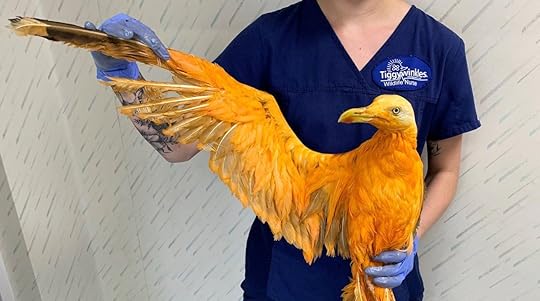
Few things are more disappointing than getting excited about a rare discovery, and then finding out that it’s actually very mundane. When good Samaritans rescued a bizarre-looking bright orange bird from the side of the road in England on July 1, and called the Tiggywinkles Wildlife Hospital to explain their find, the staff had no clue what to expect — large orange birds are not exactly a common sight in the UK.
Upon seeing the animal, however, it was clear to the expert staff that it wasn’t a rare or exotic find — it was just a seagull that had been soaked in curry or turmeric.

Photo: Tiggywinkles Wildlife Hospital/Facebook
“[The spice] was all over his feathers, preventing him from flying properly,” explained the wildlife hospital in a Facebook post. “We have no idea how he got into this predicament but thankfully, apart from the vibrant colour and pungent smell, he was healthy.”
The team at the hospital gave the seagull a thorough bath, which resulted in a pretty big vat of water that smelled like curry. The hospital named the bird Vinny, after the Indian dish vindaloo, and he is now being prepared for his release back into the wild.

Photo: Tiggywinkles Wildlife Hospital/Facebook
This isn’t the first spice-related incident to happen to a seagull, either. In 2016, The Guardian reported that a seagull fell into a vat of chicken tikka masala at a UK factory while scavenging for food. Luckily, the seagull was cleaned up by veterinary staff and returned safely to the wild. 

More like this: illennials are super into birding now. Here are the best places to go birding around the world
The post Rescued neon orange bird turns out to be a seagull covered in spices appeared first on Matador Network.

New Mississippi law on labels

Grocery shopping in Mississippi is about to get terminologically ridiculous. A new law has just gone into effect banning plant-based meat providers from calling their products “veggie burgers” or “vegan hot dogs.” The words “burger” and “hot dog” are permitted only for products made from slaughtered livestock. According to proponents of the law, it’s a necessary regulation to avoid confusing customers, and violating the law is punishable with jail time.
Nobody is confused with the terms “alcohol-free beer” or “gluten-free bread,” so why they would be mixed up with a self-explanatory “vegan bacon” remains to be explained.
Many believe, however, that the law is simply an attempt by the meat lobby to discourage customers from buying meat alternatives. Michelle Simon, the executive director of the Plant Based Foods Association, said in a statement, “The plant-based meat alternative category is on fire right now, with consumers demanding healthier and more sustainable options. This law, along with similar laws in several other states, is the meat lobby’s response.”
Missouri passed a labeling law last year, though it was challenged in court and is currently in settlement talks. Dozens of other states have considered similar laws, which are unsurprisingly popular with farmers and ranchers. As the world’s population becomes more climate and diet-conscious, farmers are concerned that meat alternatives will soon seriously threaten the traditional meat market. And it appears that meat lobbyists aren’t waiting for that day to come. 

More like this: 10 best vegetarian and vegan places to eat at in Chicago
The post New Mississippi law forbids grocery stores from using the words ‘veggie burger’ appeared first on Matador Network.

Vienna using bad reviews

The city of Vienna is turning negative online reviews on their heads by fully embracing them. In a new campaign called “Unrating Vienna,” the Austrian capital is highlighting negative reviews written about local restaurants, museums, and other attractions to humorously encourage visitors to come make their own judgments.
The campaign uses real reviews and credits their authors, though it certainly singles out some of the more amusing ones — like a review for the renowned Leopold Art Museum that reads, “Paintings are disgusting.”

Photo: Unrating Vienna
According to the campaign’s website, 95 percent of all holidaymakers read at least seven reviews before making a booking, 47 percent of all users are skeptical if they find only positive reviews of a product or location, and 20 percent of all Yelp reviews are fake.
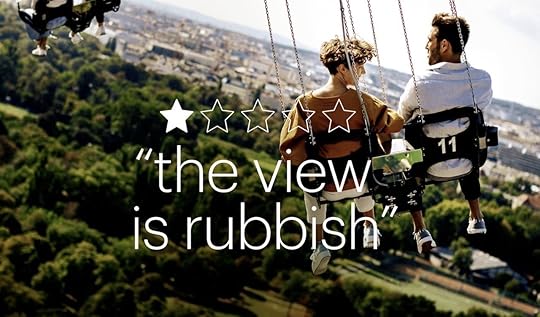
Photo: Unrating Vienna
Vienna might be taking a risk, but the approach is so inventive, bold, and funny that it could very well push people to visit and prove the reviews wrong. 

More like this: The 7 best coffee houses in Vienna
The post Vienna is using bad online reviews and reverse psychology to lure tourists appeared first on Matador Network.

July 5, 2019
Best yoga teacher training programs
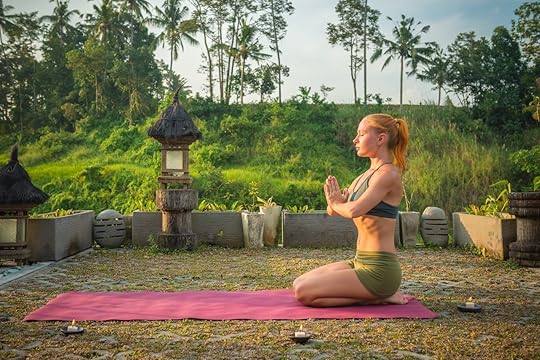
The practice of yoga has swept the globe as humans seek alternative therapies to liberate the mind. In an era that demands so much of our attention, yoga has become a path of refuge for many, helping us to connect deeper with our mind, body, and soul.
You’ll now find a yogi community in almost every country across the globe. In the US, the number of yoga practitioners is expected to reach 55 million by 2020. This staggering growth reflects a shift towards a more mindful culture, where esoteric practices are being used to improve both mental and physical health. With such a large increase in the practice of yoga worldwide, the demand for teachers is increasing, and so is the number of teacher training centers.
Before choosing a teacher training center (TTC) set your intentions for the training. Do you want to focus on a particular style of yoga? How many hours are you willing to commit? What is your budget? What are your reasons for undergoing teacher training? Once you have those answers, you can seek out a teacher training center that resonates with you. It’s important to note that yoga teacher training centers have become booming businesses, which has resulted in some centers operating with a lack of authenticity. That being said, there are a number of genuine centers around the world offering yoga teacher training in various disciplines, and we’ve put together this guide as a start.
India
Why yogis choose India
India’s spiritual roots run incredibly deep. Considered the birthplace of yoga, many students choose to come to India for their training to gain an immersive experience in one of the country’s many ashrams. Students also choose India because of the variety of related subjects offered, including Ayurveda training, Mudra training, and Kundalini Yoga training.
The best places to study yoga in India
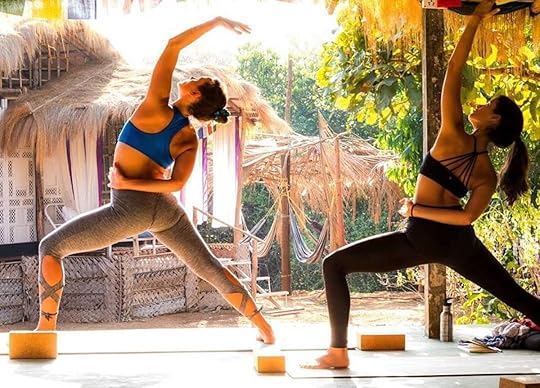
Photo: Earth Yoga Village/Facebook
Earth Yoga Village, Goa: This eco-conscious yoga village is located in the jungle beneath Goa’s flourishing Western Ghats. The school provides a supportive environment for students to reconnect with nature and themselves through their 200-hour intensive Hatha teacher training. The course consists of 27 days of community living, asana, meditation, pranayama, and mantra practice through self-discipline and awareness of the nature of mind, body, and spirit. Earth Yoga Village also offers training in Yoga Nidra, Yin Yoga, and Holistic Yoga.
Price for 200-hour TTC: $1,250 – $3,300 depending on accommodation choice
Mukta Tantra Yoga, Rishikesh: Mukta Tantra Yoga describes itself as the “essence of all Asiatic Mysticism,” incorporating education surrounding chakras frequencies, breathwork, sound healing, vibrations, and consciousness. It offers a comprehensive 200-hour Kundalini and Chakra yoga teacher training that will take you on a highly spiritual journey inward. Kundalini yoga is an increasingly popular form of Yoga that aims to awaken the Kundalini energy, which lies coiled at the base of the spine. In Kundalini yoga, practitioners use breathing exercises, physical postures, chanting, and meditation to unlock this powerful energy. The Kundalini practice is endorsed by famous stars including Kate Hudson, Alicia Keys, and Russell Brand.
Price for 200-hour TTC: $1,650
Sivananda Ashram, Kerala: Surrounded by the endless backwaters and forested hills of Vazhichal, the Sivananda Ashram is located in India’s southern state of Kerala. The four-week, intensive, 200-hour residential course is based on the ancient Gurukula system of India where teacher and student live together. Expect a rich new experience while you immerse yourself in the traditional way of life of an Indian ashram, including the consumption of locally sourced vegetarian food. Devotional practices, traditional to India, are an integral part of the course, including daily communal mantras and satsangs.
Price for 200-hour TTC: $2,335 – $2,760 depending on accommodation choice
Ayur Yoga Eco-Ashram, Mysore: The Ayur Yoga Eco-Ashram is located in the peaceful surroundings of an 18-acre organic farm in Mysore, Karnataka. The ashram extends a socially and environmentally conscious arm with initiatives such as eco-friendly living, vegetarian living, and a charitable trust that works to educate local farmers about the benefits of organic farming. The 200-hour Hatha teacher training includes the methodologies of the asanas, pranayamas, and meditation techniques.
Price for 200-hour TTC: $2,400 for a twin-share room
Bali, Indonesia
Why yogis choose Bali
Bali is sometimes referred to as the “island of the Gods,” with ancient spiritual beliefs embedded in the culture. Engraved temples depicting ancient Gods line the streets, and devout locals pay daily tributes with offerings of money, food, and water. The energy of the island is remarkably spiritual, despite the concern of over-tourism, and attracts many spiritual seekers each year.
The best places to study yoga in Bali

Photo: Akasha Yoga Academy/Facebook
Akasha Yoga Academy, Ubud: Surrounded by the tropical jungles of Ubud, the Akasha Yoga Academy is a serene location to dive into the yoga journey. The center offers both 200-hour and 300-hour trainings incorporating energy-based classical Hatha Yoga, Kundalini Yoga, spiritual heart meditation, and the non-dual wisdom of Advaita Vedanta. Students practice to the sound of the afternoon Bali rains on the open-air bamboo structure erected at the center. Afternoons are rewarded with a swim in the in-house pool.
Price for 200-hour TTC: $2,550 with an early-bird discount available
Serenity Yoga, Nusa Lembongan: Escape the crowds on Bali’s main island and head over to the sleepy, less-crowded island of Nusa Lembongan. Here you will find Serenity Yoga, “built entirely on a foundation of love and respect for the ocean, for nature and for the community.”
This tranquil center located yards from the beach offers a range of courses, including 200-hour Holistic Yoga and 300-hour advanced Vinyasa and Yin Yoga. The courses are spread out over 30 days, reducing the daily hours to nine, and classes are limited to a maximum of six students to ensure that each student gains maximum opportunity and exposure to the practice.
Price for 200-hour TTC: $2,900
Thailand
Why yogis choose Thailand
Perhaps Thailand is still winning the hearts of Leo fans everywhere with the hope to find a paradise as pristine as the paradise represented in the film The Beach. Or perhaps yogis are drawn to the friendliness of the Thai people and the fact that vegan pad thai is always available and always affordable. Whatever the reason, Thailand is a very popular place for yoga teacher training.
The best places to study yoga in Thailand
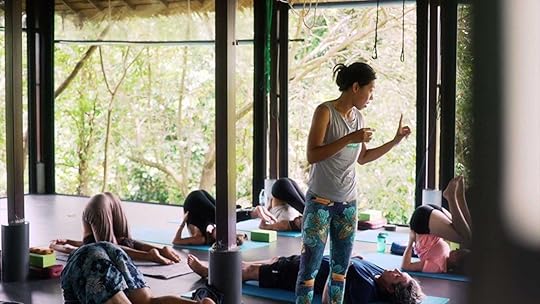
Photo: Sunny Yoga/Facebook
Sunny Yoga, Koh Phangan: The secluded Thai island of Koh Phangan has seen an influx in yoga and meditation schools with Western influence. However, Sunny Yoga is one of the few schools on the island that is led by local Thai teachers. From humble beginnings, Sunny Yoga started from a small platform on the eastern side of the island with only a single 10:00 AM class. Nowadays, Sunny and Aom lead daily classes and teacher trainings, offering a 200-hour Hatha and Vinyasa based multi-style course. Located in close proximity to sandy beaches, beautiful sunsets, and lush waterfalls, mother Koh Phangan will connect you to the earth while you put your body and soul through this extensive training.
Price for 200-hour TTC: $2490 with an early-bird discount available
Samma Karuna, Koh Phangan: This awakening and healing center on Koh Phangan is one of the most comprehensive of its kind. Offering daily classes in almost all the esoteric practices — including yoga, meditation, Kirtan, Reiki, Qi Gong, Tantra, Tai Chi, and more — the internationally recognized center has won awards for its safe, spiritual space, which attracts seekers of all kinds. The 200-hour yoga teacher training course offers asana practice and theory in Hatha, Vinyasa, and Yin Yoga, as well as various meditations, pranayamas, and training in anatomy and physiology of the body.
Price for 200-hour TTC: $2,694 with a volunteer discount available
Nepal
Why yogis choose Nepal
Many travelers tell tales of spiritual awakenings and healings in Nepal, a resilient country that attracts the adventurous traveler. The southern province of Lumbini is the birthplace of Buddha, and therefore religion and spirituality have been deep-rooted in Nepali culture for millennia. This has attracted a yogic community and opened up the demand for yoga teacher training centers. Nepal is also one of the world’s most affordable countries for yoga teacher training.
The best places to study yoga in Nepal

Photo: Yoga Teacher Training In Rishikesh – Rishikul Yogshala/Facebook
Rishikul Yogshala, Pokhara: Learn yoga to the backdrop of the Annapurna range in Nepal’s lakeside city of Pokhara. Rishikul Yogshala is one of Pokhara’s most renowned teacher training centers offering 200-, 300-, and 500-hour Holistic Yoga teacher training courses. Undergo cleansing rituals and practices for complete purification of the mind and body, and revitalize with Ayurveda massage from on-site traditional therapists. Students stay at the Infinity Resort Pokhara, a comfortable hotel with modern facilities. Vegetarian meals are provided three times daily, and there are also optional excursions available. The center is also committed to Karmic Yoga and participates in regular lakeside cleanups to promote environmental sustainability.
Price for 200-hour TTC: $1,700-1,900 depending on accommodation choice
Nepal Yoga Home, Kathmandu: Nepal Yoga Home is a leading yoga school located in Kathmandu, Nepal. Students live on site at the converted mansion tucked beneath the protected Nagarjun Forest Reserve, far enough from the chaotic city center to provide a peaceful retreat but close enough should you want to explore the spiritual landmarks of Nepal’s capital. The Yoga Alliance-certified ashram provides 200-hour, 300-hour, and 500-hour training programs in Holistic Yoga, incorporating a mix of asana, pranayama, meditation, philosophy, kriya, bandhas, mudra, and mantra chanting. Classes are conducted on the rooftop level of the home to panoramic views of the Kathmandu valley.
Price for 200-hour TTC: $1,400 depending on accommodation choice 

More like this: 6 different types of yoga that you can try around the world
The post A guide to yoga teacher trainings around the world appeared first on Matador Network.

Buenos Aires’ San Telmo neighborhood
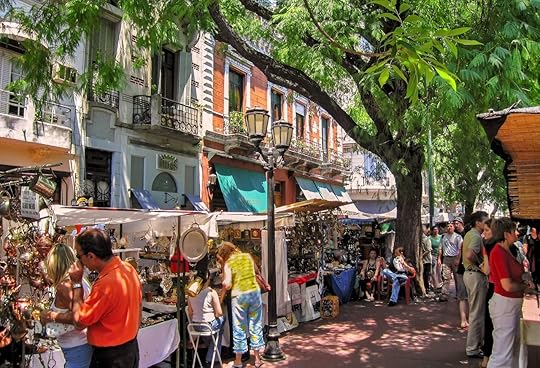
Buenos Aires has a number of well-known neighborhoods. Palermo Hollywood and Palermo Soho come to life at night with their bars, restaurants, and nightclubs. Recoleta is an affluent suburb with leafy streets, home to 19th-century mansions designed by French architects. La Boca, settled by Italian immigrants in the 1830s, attracts visitors to its brightly painted corrugated buildings.
Then there is San Telmo, the oldest suburb of Argentina’s capital. Historians believe that the first settlement was founded here by the Spanish in 1536. Prior to the mid-1800s, it was home to dock workers then, the wealthy moved in and built mansions. When yellow fever swept through the area, they fled. Those mansions became homes for immigrants who arrived in the late 1800s. Take a walk through San Telmo’s slightly shabby, cobbled, narrow streets and discover one of Buenos Aires’ most historic neighborhoods.
Learn about its working-class history.
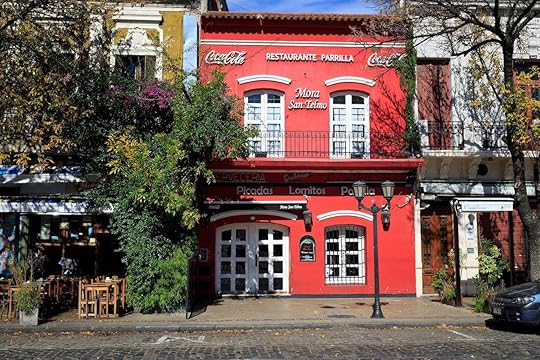
Photo: sunsinger/Shutterstock
Once in the neighborhood, accessed from the city center by the 33A bus in about 20 minutes, your first stop should be the El Zanjón Museum. Situated at Calle Defensa 755, this 1830s mansion was abandoned during the yellow fever epidemic and later turned into apartments, with minimum standards of sanitation, for working-class families. Declared off-limits in 1985 — the government declared the building too dangerous for occupation — it was subsequently bought to be converted into a restaurant.
El Zanjón, which translates as “ravine,” once had a stream running below it. After its ground floor was dug out of dirt and rubble, excavators found tunnels below extending just over a mile, which rerouted this water. The story goes that when the stream subsequently dried up, the tunnels were used to get to other areas of the city. Old photographs, china, combs, toothbrushes, keys, and other artifacts found in the excavations can be seen on display in the museum. You can also walk below ground, sighting the original brick walls of the tunnels, a well, and a water-storage facility that resembles a brick kiln. It’s a great insight into old Buenos Aires and accessible as part of a guided tour, in English, at set times during the day.
Also in San Telmo is the Museo Histórico Nacional, which primarily focuses on Argentina’s 1810 revolution, the War of Independence, and the rest of the 19th century but also contains information on the country’s pre-colonial history. The sword of Independence hero José de San Martín is on display, guarded by a soldier. You’ll get a lot more out of the museum if you take the English tour, as most exhibit descriptions are written in Spanish. Situated in Parque Lezama, you could take a break from walking and relax in the gardens and sip a mate, a caffeine-rich herbal drink consumed by the gallons across Argentina.
As you walk through the streets, have a read of the various information boards in the area, there’s one in Plaza Dorrego and another on the side of Bar Plaza Dorrego. The area has two art museums, Museo de Arte Contemporáneo Buenos Aires and Museo de Arte Moderno de Buenos Aires, which displays thousands of modern and contemporary Argentinian works along with international artists’ work. Both are in Avenida San Juan.
Wander the street markets.
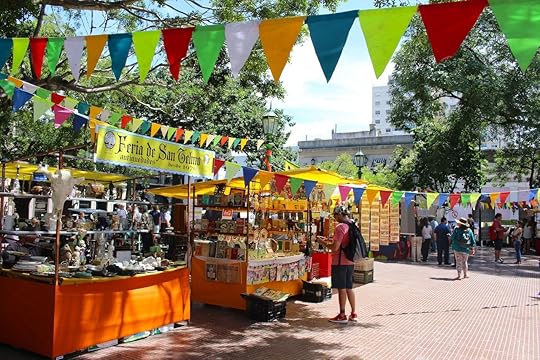
Photo: gvictoria/Shutterstock
On weekdays, San Telmo’s streets are rather quiet with little happening, great for strolling and taking in the architecture and atmosphere of the neighborhood, and checking out of its numerous antique stores. Rundown buildings sit amongst well-preserved colonial structures, giving the neighborhood a unique vibe that stands apart from the rest of this massive city. On Sundays, though, San Telmo is bustling with hundreds of people trawling the stalls of Feria de San Telmo along cobbled Calle Defensa. The market itself is massive — around 10 blocks of vendors and people — and has been in operation since 1970.
Your best bet is to start at the far end and walk through the market until you reach the Plaza de Mayo, home to the Presidential Pink Palace, Casa Rosada, where Eva and Juan Peron gave speeches from the balcony back in the 1940s and ‘50s. The market begins around 10 AM and runs until about 5 PM, being busier in the afternoon — sometimes lose-your-friends-in-the-crowd busy. Several hours can be spent viewing handicrafts, jewelry, antiques, paintings, and clothing, amongst other items. To take a break from the crowds, pop into the El Zanjón Museum as you pass.
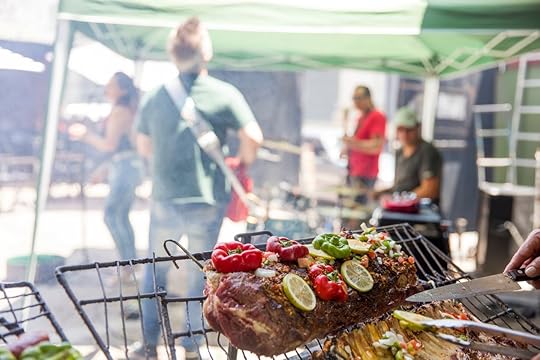
Photo: Goran Bogicevic/Shutterstock
Street food is the forma preferida de comer at the market. In courtyards resembling car parks without cars, you can smell meat and chorizo sizzling over open grills, cooked by singlet-wearing men behind wisps of white smoke. Try out a hamburguesa (hamburger), choripan (sausage in bread), or bondiola (strips of meat in bread). Live music follows you through the streets, and you’re sure to catch sight of tango dancers either outside or in cafés and restaurants. This is a great place to stop for a beer or meal and be entertained. Back on the street, don’t forget to look up. Colonial buildings with wrought-iron balconies and shuttered narrow windows are reminiscent of Paris. The market finishes in Plaza Dorrego, which is packed with antique stalls.
If you miss the Sunday market, wander San Telmo Market — a permanent fixture located in a building designed by an Italian architect back in 1897. Opened for the European immigrants, this large indoor market now sells fruit and vegetables and is home to a large number of antique shops. It’s like stepping back in time — be sure to check out the wrought iron and glass central area. Opening daily at 10 AM., during the week it’s quietish with a few stalls only trading at the weekends. You can also eat here at the small cafés/restaurants.
Bring your dancing shoes.
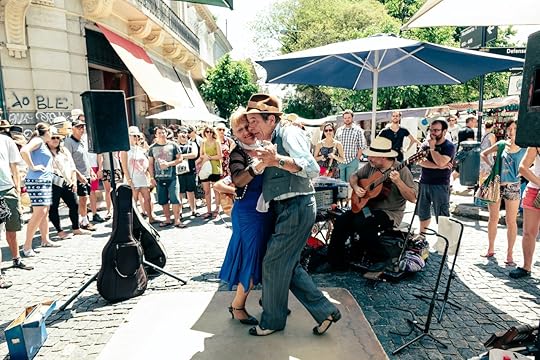
Photo: elbud/Shutterstock
Sunday really is the time to visit San Telmo. In the evening the antique stalls have gone from Plaza Dorrego, replaced with tables and chairs to dine at and, at one end, wooden floorboards. Below colored light bulbs strung between trees, well-dressed locals tango amongst a few shuffling tourists to scratchy recorded accordion music. It sounds a lot like 1930s or ‘40s radio, but you’re there for the dance party not the tunes.
It’s like a scene from an old movie set, with the square intimately lit by old-style street lamps and overlooked by 19th-century balconies. The tables are served by the surrounding restaurant, so everyone in your crew can eat what they want and still dine together. Booze flows freely, and the party tends to stretch long into the night — often into the next morning. To see a more professional display of tango dancing, visit one of the tango music halls in the district that offer dining and a show. You can also sign up for individual or group classes at a number of local schools.
Eat like a local.
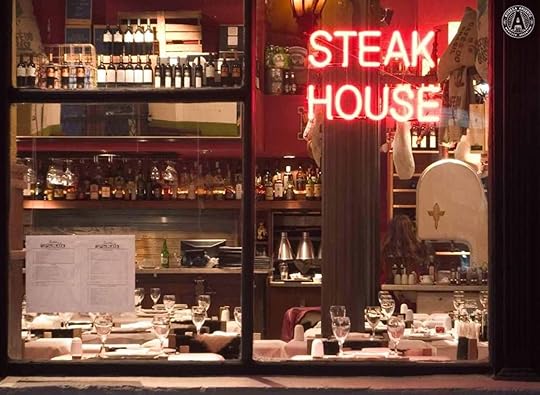
Photo: Gran Parrilla Del Plata/Facebook
With all the walking you’ll do around Buenos Aires, you’ll need to eat. Get yourself into one of the traditional Argentinian steakhouses that are all over town. Argentinians eat more than 100 pounds of beef per head every year. San Telmo has quite a number of steakhouses, especially along Calle Defensa, so finding one isn’t a problem.
Argentinians tend to eat late, with many restaurants not opening until 8:00 PM. The meat cooks slowly over a parrilla, a grill heated by wood or charcoal. Start with provolone, a grilled circle of cheese that, in addition to being delicious, will make it look like you’ve done this before. A thin crunchy outside hides a smoky, salty, soft inside. Gran Parilla del Plata, where Michelle Obama dined while in town, is a busy corner restaurant in an area of otherwise rundown, graffitied buildings and random rubbish piles. It shines like a lighthouse in the dark. Reservations might be best, or you could be in for a long wait. The steak will quite possibly be the tenderest you’ve ever had, though there’s plenty else on the menu, including blood sausage, chinchulines (small intestine), chorizo, kidneys, and ribs. There’s chicken, fish, pizza, and a number of vegetable dishes.
Another good option for first-timers in the neighborhood is the dim atmospheric interior of Bar Plaza Dorrego on Plaza Dorrego. This café/bar has been there for over 100 years. Watch San Telmo’s people go by through the large windows looking out onto the square while trying out the local drink, Fernet Branca. 

More like this: 7 ways to save money on your trip to Buenos Aires
The post A walk-through guide to Buenos Aires’ historic San Telmo neighborhood appeared first on Matador Network.

Best live music venues in Toronto

In musical terms, Toronto is the New York City of Canada. The city is the country’s musical proving ground and the catalyst to fame, fortune, and global touring for many of Canada’s biggest stars. Drake, for instance, is from Toronto and one of the biggest names to call the city home. So is Abel Tesfaye, better known as The Weeknd, and Shawn Mendes. Steppenwolf and Rush made the moves here back in your parents’ day, and Avril Lavigne, originally from Belleville, Ontario, cut her chops here. So did her ex-husband, Deryck Whibley, and his band Sum 41.
The coolest thing about all of this is that you can actually visit many of the clubs where these artists played on their way up, and no matter what time of year you visit, there’s likely a major headliner in town. Here’s where to see them, along with Toronto’s rising talent, on a trip to the city.
To see big-name stars and diehard touring bands

Photo: Scotiabank Arena/Facebook
Scotiabank Arena
Drake is a busy guy, but if you happen to be in town at the same time as he is, Scotiabank Arena is where you’ll find him. Scotiabank is the top-tier venue in town and one of the only places in the world where you can eat poutine and watch Bon Jovi at the same time. This year’s headliners include the Backstreet Boys, John Mayer, and Khalid, each of which promises an epic light show and expensive parking (so take the Metrolinx in). Holding just under 20,000 people, this arena in the South Core district is also the home of the now-world champion Toronto Raptors and the Toronto Maple Leafs, so it’s also a great spot to see and be seen even when there’s not a big-name concert happening.
Where: 40 Bay St.
The Danforth Music Hall

Photo: The Danforth Music Hall/Facebook
Smaller than Scotiabank Arena but bringing in equally killer artists, the Danforth was built 100 years ago and offers the vibe of a theater that has been rocking for about that long. The acoustics catapult off the walls, and the open floor below tends to get rowdy. You can escape to the second level balcony if that’s more your style. The coolest thing about this place is that you can really feel that dark rock club vibe but in a place professional (and large) enough that acts like Justin Bieber and Chance The Rapper still prefer to perform here.
Where: 147 Danforth Ave.
The Cameron House
No matter the night, you’re able to see a full lineup of touring bands at The Cameron House. The club has two separate venues, often both running concerts simultaneously across the roots and rock, and you might even be lucky enough to catch a big name performing a stripped-down acoustic show.
Where: 408 Queen St. W
To experience Toronto’s local music scene

Photo: The Hideout Toronto/Facebook
The Hideout
It’s obvious when a venue is all about the music. This is the case at The Hideout, where a carefully curated roster of local and touring bands performs on a nightly basis. The sound is great, and there’s plenty of space on the floor to rock out with other people looking to do the same. You might catch rock and roll one night and alt-country the next, but whoever is playing is bound to put on a solid show. If you’re a true music fan — you attend shows because you want to feel the passion emanating from the stage — The Hideout is going to be a tough place not to hit every night while you’re in town.
Where: 423 College St.
Hugh’s Room Live
Hugh’s Room Live hosts blues, jazz, and funky rock acts that are on the rise but haven’t yet spilled over to major mainstream success. This is a great spot to see an artist with a refined act in a setting intimate enough that you can make out their facial expressions even after you’ve had a cocktail or two — of which this place has a top-tier list. And, contrary to most decent music venues, you can actually skip the pre-show dinner plans and do your pregaming here as well without sacrificing a good meal. The menu has everything from burgers to burrata.
Where: 2261 Dundas St. W
The Mod Club
On the north end of Little Italy, The Mod Club is pretty much exactly what you’d expect anything with the word ‘mod’ in it to be: hip, but somehow managing to still be alternative enough that an indie band from Montreal would want to play here. The light and sound specs are solid and consistent, designed specifically to optimize the stage show of a band that doesn’t quite have the budget to travel with a flying drum riser or fireworks show. The club fits about 600 people and fills up when touring acts come through. It also hosts EDM shows and dance parties, making it a fun club to hit after dinner or after a neighborhood bar starts to wind down, as it’s minutes away from Koreatown, Chinatown, and the Entertainment District.
Where: 722 College St.
To get a bit edgy

Photo: Bovine Sex Club/Facebook
Bovine Sex Club
So this is the deal. Sometimes you’re on a trip to a new city, and at some point during dinner that bug to get a bit crazy bites, and it becomes impossible to ignore after the third glass of wine. This is where the Bovine Sex Club comes in handy. One of Toronto’s most ubiquitous clubs for off-kilter rock and punk bands, the Bovine is equally entertaining for those who just want to stand by the bar and party with random strangers. People are friendly here, and you definitely won’t leave with any sort of trepidation about why you decided to come here in the first place. Especially if you happen to come in on Pussy Whipped Wednesdays. The club is right in the heart of the Queen Street party district, and you’re bound to end up in the neighborhood on a night out anyway. Might as well pop in for a drink and watch the band.
Where: 542 Queen St. W
Hard Luck Bar
Divey, raw, and full of energy. That’s Hard Luck Bar and the bands that play it. The beer is cheap, too, but you won’t leave with any extra cash in your pocket because going to a dive-level rock show and not buying a t-shirt from the band to document your experience is a serious bummer. This is the kind of place where it’s really hard to not have a great time, though you definitely want to bring earbuds and should probably pop a pair of Ibuprofens because the next morning might hurt.
Where: 772A Dundas St. W 

More like this: The most diverse city in the world also has its most exciting food market
The post Where to see the best live music in Toronto appeared first on Matador Network.

Where to see wild horses

For most people, the idea of wild horses conjures up images of proud mustangs galloping across the American prairie. Yet the last truly wild horses disappeared from North America at the end of the last ice age, about 12,000 years ago. In fact, there are no wild horses left in the world today. The American mustangs, the Australian brumbies, and even the Przewalski’s horse of the Mongolian steppe are the descendants of the domesticated horse.
Experts believe that horses were domesticated around 3500 BC in the Eurasian steppes, a vast temperate region of grasslands and savannas stretching from modern-day Bulgaria to Mongolia. As people traveled and traded across the world, they took their pack animals with them. Over the years, some horses escaped and formed feral herds, from which all today’s free-ranging horses have originated.
But while these horses are not truly wild in biological terms, they are certainly wild in attitude. And for many of us, they embody the essence of freedom. Today, free-ranging horses can be found on every continent except Antarctica. Here are the best places to see them in the wild.
In North America
Horses first returned to the Americas with the Spanish. Famous Conquistador Hernán Cortès, for example, brought enough horses by 1525 to start a breeding colony in Mexico. These domestic Iberian horses became the founders of America’s mustangs.
Today, free-roaming horses are protected by law in the United States as the “living symbols of the historic and pioneer spirit of the West.”
Theodore Roosevelt National Park, North Dakota

Photo: Anh Luu/Shutterstock
Lying at the meeting point of the Great Plains and the Badlands, Theodore Roosevelt National Park in North Dakota is one of the best places to see free-roaming horses in America. In summer, they can be seen grazing throughout the park. You can even spot them from Interstate 94, which travels along the park’s boundary.
Pryor Mountains, Montana
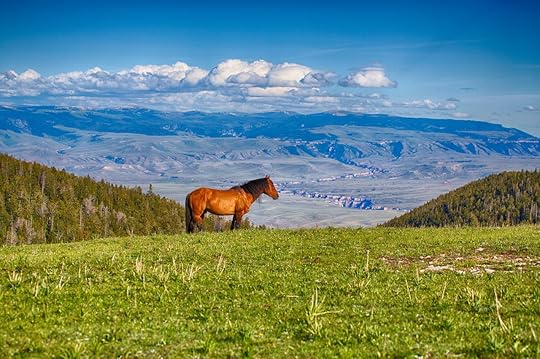
Photo: Gary C. Tognoni/Shutterstock
The Pryor Mountains are home to Montana’s one and only mustang herd. The horses are relatively easy to find on the East Pryor Mountain and in the desert lowlands. For the best chance of spotting them, keep your eyes peeled while driving along Highway 37 in Bighorn Canyon National Recreation Area.
Virginia Range, Nevada
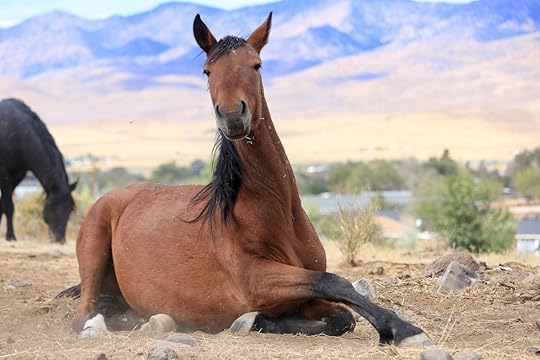
Photo: Dallasetta/Shutterstock
Some of the first horses to be protected in the United States by the Wild Free-Roaming Horses and Burros Act are the free-ranging horses of Virginia Range in Nevada. The best places to spot them are the watering holes east of Reno. If you are driving through the area, keep an eye out for the horses along Route 341.
Little Book Cliffs Wild Horse Area, Colorado
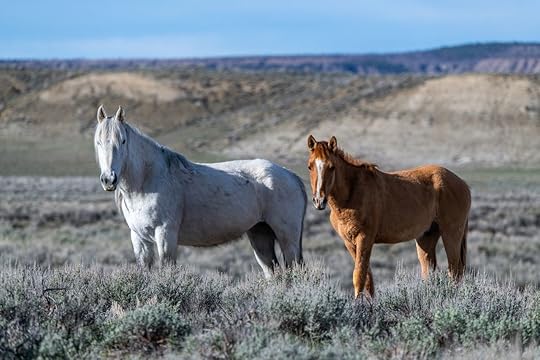
Photo: Kerry Hargrove/Shutterstock
Between 80 and 150 horses live among the 36,000 acres of plateaus and canyons in Little Book Cliffs in Colorado. The best way to find them is by hiking or horseback riding through the rugged terrain. In summer months, look for them in the Indian Park and North Soda area, and in winter, check out the Coal Canyon and the Main Canyon.
Rocky Mountains of Alberta, Canada
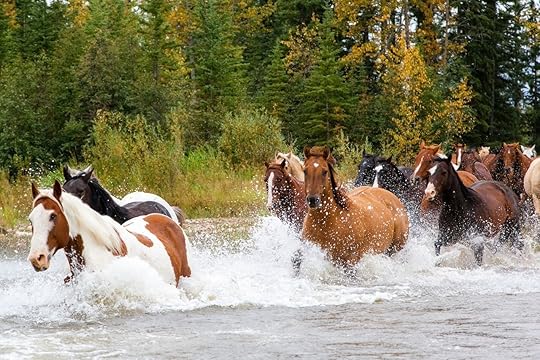
Photo: Ronnie Chua/Shutterstock
Across the border in Canada, free-ranging horses can be found in the Rocky Mountains in Alberta. Known as “wildies,” these horses range over 304 square miles of the Sundre Equine Zone on the eastern slopes of the mountains.
In Australia
Romanticized by novels and movies, the brumby, as the free-ranging horse is known in Australia, is a contentious issue for the government, the wildlife conversationalists, and the Australian public. Like the mustang, the brumby originated from domestic horses brought to Australia by the European settlers. But in the absence of natural predators and other large grazing animals to compete with, brumby population grew unchecked. Today, Australia is home to the world’s largest population of free-ranging horses, numbering at least one million.
However, Australian ecosystems didn’t evolve with large, hard-hoofed animals, and large mobs of feral horses cause significant environmental damage by compacting soils, degrading water sources, and destroying delicate vegetation communities that are home to several threatened native species. The challenge for Australian National Parks is to find the balance between the heritage value of the horses and the damage they cause to the environment.
Kosciuszko National Park, Australian Capital Territory
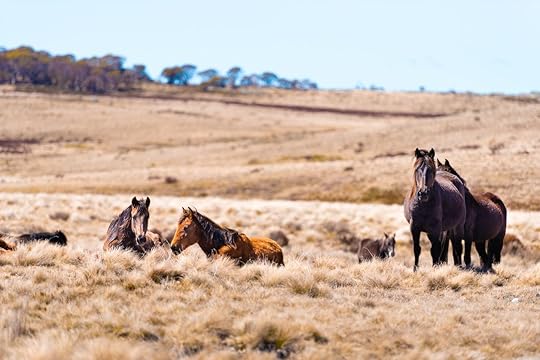
Photo: Constantin Stanciu/Shutterstock
Kosciuszko brumbies are Australia’s most famous free-ranging horses, thanks to the Australian cinematography classic The Man from Snowy River. The alpine wilderness of Kosciuszko National Park is home to anywhere between 4,000 and 8,000 horses that can be seen grazing throughout the park.
Guy Fawkes River National Park, New South Wales
The brumbies living among the rugged river gorges and forested valleys of Guy Fawkes River National Park are the direct descendants of Australia’s wartime cavalry horses. The park has several hiking trails that provide a good opportunity for spotting the brumbies, especially from the higher viewpoints.
Outback, Northern Territory
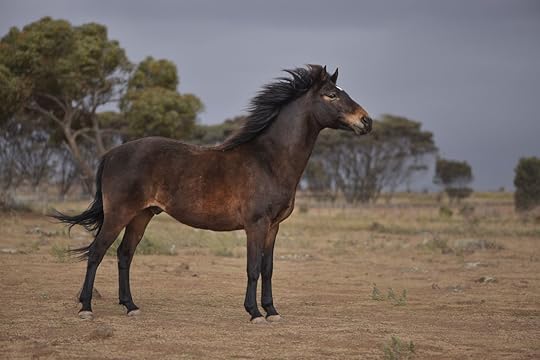
Photo: Picsoftheday/Shutterstock
One of the most unusual environments to see horses in Australia is the arid Outback. Yet Australia’s Northern Territory is home to the largest population of free-ranging horses on the continent, numbering between 15,000 and 30,000 animals. They can be seen throughout the state, including the West MacDonnell Ranges in Central Australia.
In Europe
In stark contrast to Australia, free-ranging horses are welcomed in Europe. The last naturally occurring populations of free-ranging primitive European horse are found in Portugal, where they are protected by law despite the uncertainty of their origins.
In recent years, captive-bred Konik horses have been reintroduced in many European countries as part of Rewilding Europe initiative. The Konik horse, also known as the Polish primitive horse, looks more like an ancient cave painting than a modern-day thoroughbred. It is a short, stocky animal with a small head and thick mane, close in appearance to the Tarpan, the extinct native wild horse of the Eurasian steppes.
Poland
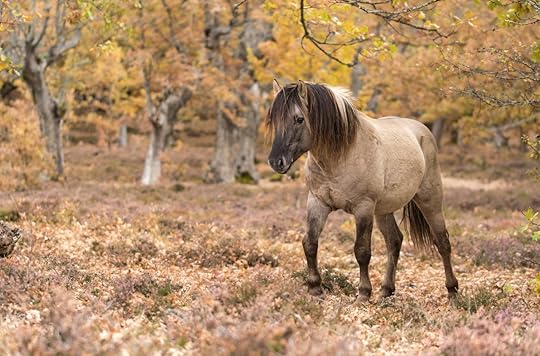
Photo: Wildpix productions/Shutterstock
Poland is the birthplace of the Konik captive breeding program. Reintroduced Koniks currently live in a nature reserve in Popielno and at Roztocze National Park.
Netherlands
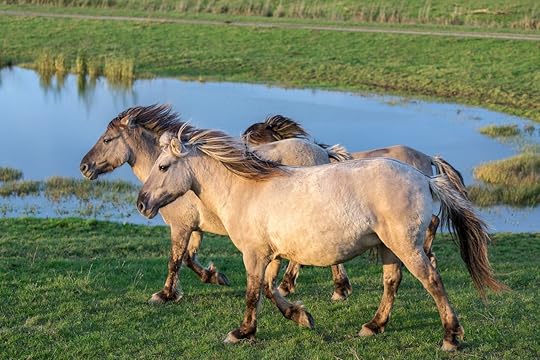
Photo: T.W. van Urk/Shutterstock
The reintroduction of Konik horses in Oostvaardersplassen Nature Reserve in the Netherlands has been a bittersweet success. The population grew rapidly from the 18 individuals released in 1983 to hundreds of individuals today. Unfortunately, the booming population has exceeded the carrying capacity of the relatively small reserve, and many horses died of starvation during a hard winter last year.
UK
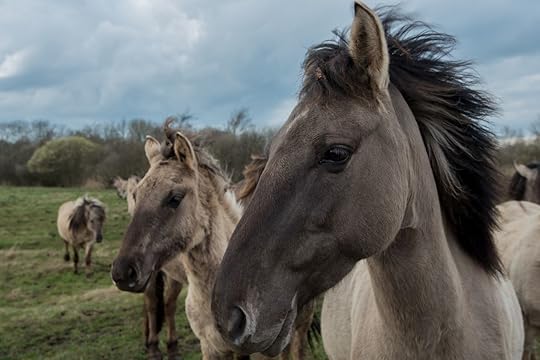
Photo: LDaly/Shutterstock
In the UK, Konik horses have been reintroduced in many nature reserves, including Wicken Fen near Cambridge, Stodmarsh National Nature Reserve, Ham Fen National Nature Reserve, Whitehall Meadow, Sandwich Bay, Park Gate Down, Redgrave and Lopham Fen, and the Mount Caburn nature reserve.
Bulgaria
The Eastern Rhodope mountains in south Bulgaria are home to about 70 reintroduced horses. Some of the best places to see them are Byala Reka and Studen Kladenets.
In Asia
Native of the Central Asian steppe, Przewalski’s horse has long been considered the only true wild horse that survived to modern times. However, a recent DNA analysis suggested that modern Przewalski’s horse may be the descendant of the domesticated horse of the Botai people — the prehistoric culture of North Asia.
Whatever its origin, by the late 20th century, Przewalski’s horse was extinct in the wild. The last wild mare was trapped in 1957 to bolster the genome of the captive population. Thankfully, the captive population also provided animals for reintroduction of Przewalski’s horse back into the wild.
Mongolia
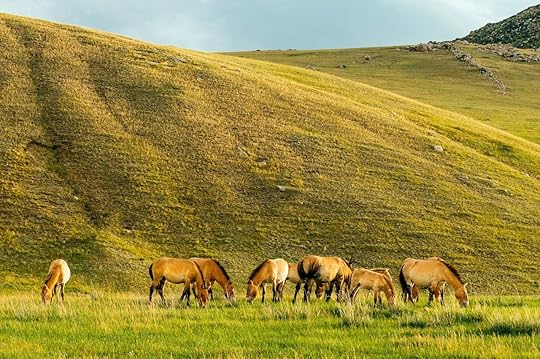
Photo: Zazaa Mongolia/Shutterstock
The return of Przewalski’s horse from extinction is one of the greatest wildlife conservation success stories. In 1992, captive horses were reintroduced in three nature reserves in Mongolia: Khustain Nuruu National Park, Great Gobi “B” Strictly Protected Area, and Khomiin Tal.
The total population of wild Przewalski’s horses in these reserves is over 400 animals, and while Przewalski’s horse is listed as endangered on the IUCN Red List of Threatened Species, it is not difficult to see in Mongolia.
China
Another Przewalski’s horse reintroduction site is the Kalamaili Nature Reserve in Xinjiang Province in China. Classified as an Ungulate Nature Reserve, Kalamaili protects 5,400 square miles of arid steppe — the preferred habitat of Przevalski’s horse.
Russia
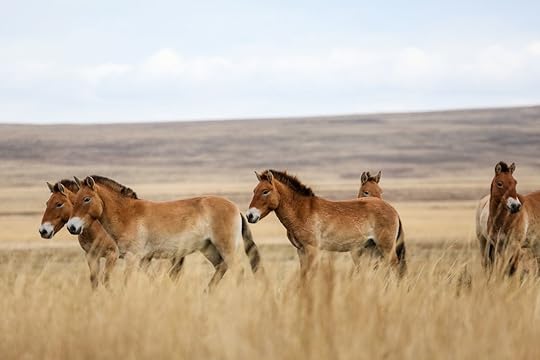
Photo: Igor Ageenko/Shutterstock
In 2016, Przewalski’s horses have been reintroduced in Orenburg Nature Reserve in the southern Ural Mountains in Russia, which led to the expansion of the reserve to include another section of steppe habitat.
Perhaps the most unusual patch of wild horse habitat is the Chernobyl Exclusion Zone, where the horses were reintroduced in a nature reserve before the infamous nuclear disaster in 1986. And in the absence of humans, wildlife populations, including the Przewalski’s horse, are thought to be on the rise.
Japan

Photo: Earth Point/Shutterstock
Originally, horses arrived in Japan with nomads from Mongolia, and the modern-day, semi-wild populations trace their roots to these domesticated founders. The best places to spot horses in Japan are Cape Toi at the southernmost part of Miyazaki’s coast and Cape Shiriya on the northeastern tip of Honshu.
In Africa
Namibia
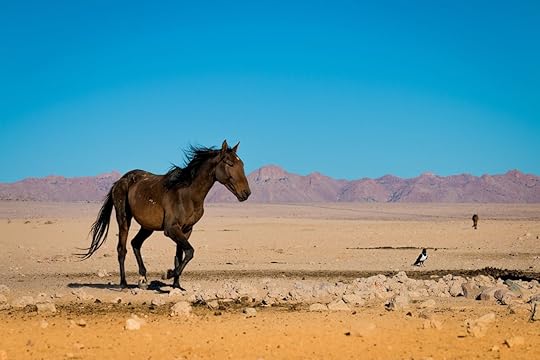
Photo: Ryno Viljoen/Shutterstock
The origin of the Namib Desert horse is unclear, but one of the more interesting theories attributes it to a shipwrecked cargo ship that was carrying thoroughbreds to Australia. It is assumed that the strongest horses swam ashore and established free-ranging populations in what are now Namib-Naukluft Park and Tsau/Khaeb National Park in Namibia.
This would explain the Namib horse’s athletic appearance. Unlike most free-ranging horses today, Namib Desert horses look like well-bred riding horses. 

More like this: The 7 best horseback-riding experiences in South America
The post The best places to see wild horses around the world appeared first on Matador Network.

Bottled waters to try at the source

Bottled spring water is a curious thing. Water from one part of the world is put into glass or, more often, plastic containers and then shipped hundreds, sometimes thousands, of miles to another part of the world. People then choose that water from across the world over perfectly fine and free tap water.
It’s like the vodka of non-alcoholic beverages: It relies almost entirely on marketing and where it’s from. But unlike most vodka, the best spring waters are from gorgeous locales that you can actually visit.
From natural springs in France to roadside springs in the US, companies are quenching a worldwide thirst for branded water by using what nature gave us. Some brands are just plopped down near a convenient water source, but others have a long history of people traveling to the location for fresh water.
Commercial water got its start in the 16th century in Italy, France, Belgium, and Germany, according to the European Federation of Bottled Waters. Water was generally unsafe (and has been through most of human history), so people would either drink alcohol instead or travel to the source and bring water back home. Europeans passed their love for springs to the Americas when they arrived, with bottled water from springs in the US dating as far back as Jackson’s Spa in Boston in 1767. You can make these travels yourself today, sometimes to the very source that people traveled to all those years ago.
A word of caution: It’s not all waterfalls and high-quality H2O in the world of bottled spring water. Some brands, like Maine’s Poland Spring, are being tested in court about where the water actually comes from. Others, like Icelandic Glacial, are in protected areas you can’t get to.
If you’re looking to travel to your hydration station, these are the best natural spring brands you can actually visit.
1. Acqua Panna
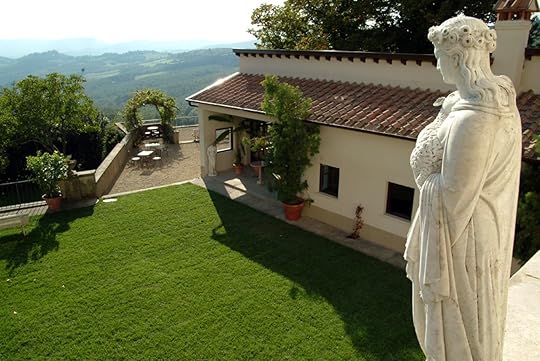
Photo: Acqua Panna
Remember those early 16th-century watering holes? Acqua Panna was one of them, and now the brand welcomes people to its property just north of Florence, Italy, in the hills of Tuscany. Acqua Panna’s history as a modern water brand starts in 1564 on an estate that was owned by the Medici family during the Renaissance. Today, the estate keeps its water pure through certified organic farming on the 3,000 acres of land around the spring, land which also has a natural reserve that wild boars, foxes, deer, and wolves call home.
How to get there: Much of the land is protected, but you can visit the Villa Panna Estate near the town of Scarperia to see the natural beauty that drew the Medici family to the area.
2. Evian
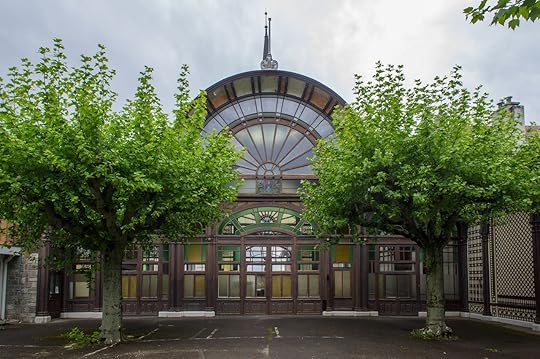
Photo: O.C Ritz/Shutterstock
Evian’s name backwards is naive, but don’t be naive and leave this place out of your water tour. Evian’s source is the rain and snow from the French Alps, and the water takes 15 years to go through glacial rocks before landing in the town of Evian-les-Bains on the east side of France near the Swiss border. Here, at the Buvette Cachat, you’ll find an outdoor water tap where anyone and everyone can come and fill their collection containers with the same H2O that’s in Evian bottles. To make the experience even better, the taps are surrounded by an Art Nouveau glass, wood, and iron building from 1903 that’s almost too photo perfect.
How to get there: Buvette Cachat is near the center of Evian-les-Bains and close to the French side of Lac Léman. The nearest major city is Geneva.
3. Mountain Valley Spring Water
Mountain Valley Spring Water has been bottled on the Arkansas side of the Ouachita Mountains since 1871. That’s longevity and history that many US water brands lack, but its appeal doesn’t stop with its age. The natural hot springs, the grandeur that is Bathhouse Row, and, of course, the water itself made dedicated fans out of US presidents like Calvin Coolidge, Dwight Eisenhower (whose physician told him to drink it after a heart attack), and Bill Clinton. Then there are the athletes and stars like Sugar Ray Robinson, Joe Lewis, and Elvis Presley who were fans. It’s appeal was once universal: Mountain Valley Spring Water was the first to be delivered from the Pacific to the Atlantic.
You can see it all firsthand at the on-site bottled water museum and former ballroom that was built in 1910 (restored in 2004) where big bands played for parties during the Roaring ‘20s.
How to get there: Driving is the surest bet. Find the historic visitor center and take a complimentary museum tour at 150 Central Ave. Hot Springs National Park, AR, 71901.
4. Perrier

Photo: Perrier/Shutterstock
Perrier is famous for its green bottles, air of French sophistication, and being the water that gets people into fancy water. The brand was one of the first to re-establish the idea that bottled is better in the US in the late 1970s, just as upper class Americans were looking for ways to flaunt their wealth and lifestyle. All of the imported water they drank, and still drink, comes from one spring near the small French village of Vergèze. At the source you’ll find a small museum that covers the brand’s history and a Beaux Arts gazebo where anyone is free to drink the same water that makes it into the bottles.
How to get there: The Perrier spring is in Vergèze, a small town in the south of France that’s about midway between Montpellier and Nimes. The visitor center is in the southeast of the city.
5. Volvic
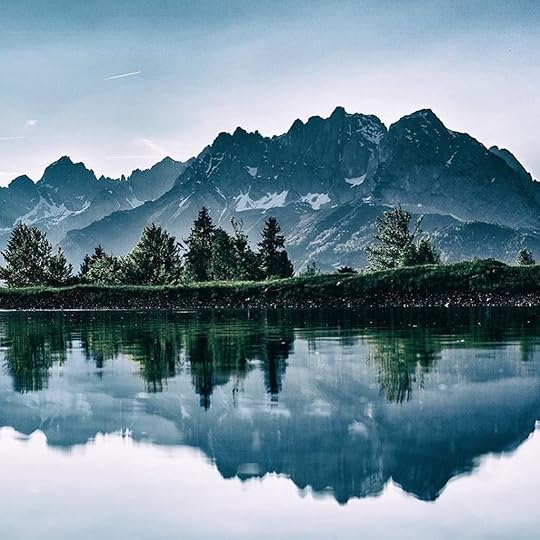
Photo: Volvic USA/Facebook
Another French favorite, Volvic comes from the Massif Central highlands in southern France. The brand heavily emphasizes the six layers of volcanic filtration that the water goes through before being bottled, which sounds cool when you’re drinking it but is even cooler when you go see that volcanic rock for yourself. Visitors enter an extinct volcano to find a grotto and waterfalls, and the bottling plant is nearby if you’re interested in the more mechanical logistics. Nature lovers can tour the Volvic Impluvium reserve full of trails and animals. You can stop by April through November, just know you likely won’t be alone as 80,000 visitors come every year.
How to get there: Find the source in the southwest part of the town of Volvic, which is near the Parc naturel régional des Volcans d’Auvergne and about as close to the middle of France as you can get. Exact directions can be found on the brand’s contact page.
6. Palomar Water
Southern California is a thirst trap that also makes you physically thirsty after taking part in all the hiking and outdoor activities available. Quench your thirst at the source with California’s own Palomar Artesian Springs on the South Grade of Palomar Mountain in San Diego County. The water and visit are free, so take some bottles to fill for later.
How to get there: Take South Grade Road (the same one that leads to the Observatory Campground) on Palomar Mountain, a state park between San Diego and Los Angeles. Near the road you’ll find a fountain to taste and bottle from the source. 

More like this: A traveler’s guide to tap water
The post 6 famous bottled spring waters you can drink for free at the source appeared first on Matador Network.

Best urban wineries in the US

When you picture an idyllic wine tasting room, somewhere that has views of neatly manicured grapevines likely comes to mind. Some of the best winery tasting rooms, however, have something completely different: a view that overlooks an industrial, not-so-neatly-manicured skyline.
This is often the case at urban wineries. It may sound like a new concept, but long before Napa became the poster child for American wine country, urban wineries were fairly common in major US cities. And, like vinyl, they’ve been making a comeback since the early 2000s.
Next time you’re craving a tasting but can’t make it to wine country, trade in Napa’s vineyards for SF or NYC’s wineries. Even if you don’t live on either coast, you’re in luck: Urban wineries are popping up all across the country. These are the best of the best, whether you’re in Tennessee, Texas, or Ohio.
Brooklyn Winery in Brooklyn, New York
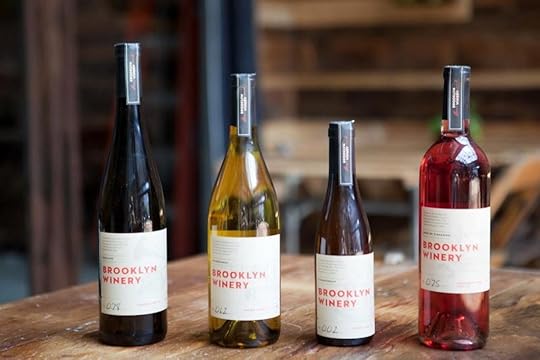
Photo: Brooklyn Winery/Facebook
Brooklyn is a hotbed of hip urban wineries. There’s Rooftop Reds, which has one of the world’s first commercial rooftop vineyards, and Red Hook Winery, which sources its grapes from around New York state and serves them up with killer views of Manhattan and the Statue of Liberty. If you only have time for one Brooklyn winery, though, we recommend the Brooklyn Winery.
Tour the airy, stylish Williamsburg space and sample a few labels for $35, or cough up an extra $10 for cheese pairings. The winery also hosts special events like blind tastings and wine education classes, as well as an on-site wine bar where you can drink by the glass, half bottle, or bottle, and fill up on bar snacks, antipasti, and shared plates.
The Infinite Monkey Theorem in Denver, Colorado, and Austin, Texas
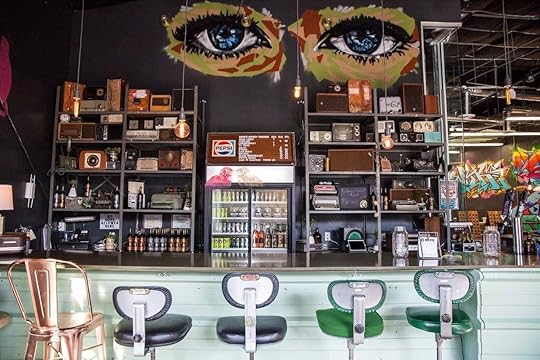
Photo: The Infinite Monkey Theorem/Facebook
Among the pioneers of canned wine, The Infinite Monkey Theorem has been nothing if not boundary-pushing since getting its start in 2008. The winery’s original Denver location helped reshape the city’s downtown core, gave beer-loving locals an easy-to-drink alternative, and redefined urban winemaking at large. Now with a second location in Austin, The Infinite Monkey Theorem sources its grapes locally from Colorado and Texas, then ages them in its casual yet cool warehouses to give “the winery access to the city and the city access to the winery.” Hour-long tours and tastings will run you $25, or $35 for a private tour.
Donkey and Goat in Berkeley, California
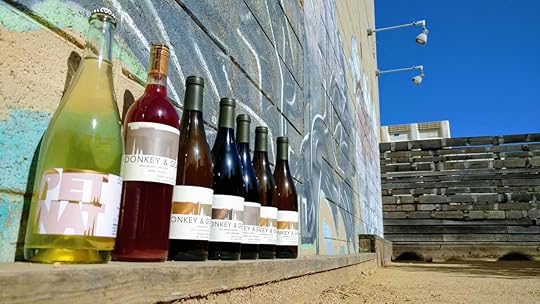
Photo: Donkey & Goat Winery/Facebook
Donkey and Goat lets you sample some of California’s finest grapes without schlepping all the way to wine country. Biodynamic practices underpin the winery’s process — which starts with sustainably farmed grapes from Napa, Mendocino, and Sierra Nevada vineyards — yielding additive-free, wild-yeast wines made from familiar grapes like pinot noir and chardonnay as well as wines from lesser seen grapes like picpoul and counoise. The tasting room, found in Berkeley’s bohemian Gilman neighborhood, welcomes walk-in tastings from Friday to Sunday for groups of six or fewer. Larger parties are asked to reserve tours and tastings in advance.
Charles Smith Wines Jet City in Seattle, Washington
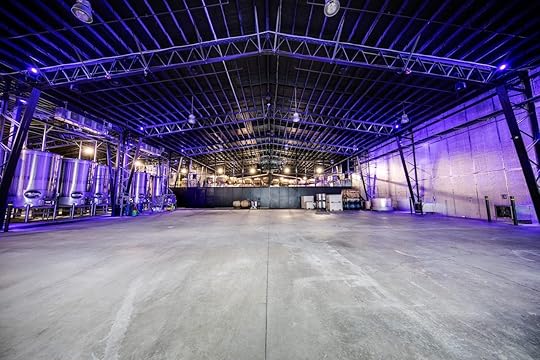
Photo: Wines of Substance/Facebook
Seattle is a coffee city. Ask any local, and they’ll probably say it’s the coffee city, with more coffee shops per capita than almost any other in the US. Unbeknownst to some, however, Seattle is also a wine city with more than 20 urban wineries to its name.
Band manager turned renegade vintner Charles Smith, who’s been named Winemaker of the Year by both Food & Wine and Wine Enthusiast, has contributed to Washington’s wine scene both within and outside city limits. More than a decade after opening his first winery, K Vintners, at the base of the Blue Mountains, Smith brought his talents to Seattle in 2015 with Jet City, one of the most prolific urban wineries in the western US. The rustic-meets-industrial space in the Georgetown neighborhood is effortlessly cool with a slight aviation motif and dual tasting rooms, one upstairs and one downstairs. Tasting fees are waived if you buy two or more bottles.
Henke Winery in Cincinnati, Ohio

Photo: Henke Winery/Facebook
Wine tasting at Henke is like taking a cross-country trip through America’s vineyards without ever leaving Cincinnati. Since 1996, the winery’s been churning out delicious bottles from grapes grown in California, Kentucky, Indiana, the Finger Lakes, and its home state of Ohio. The selection ranges from dry red and whites to sweet reds, whites, and blush wines.
Sample sparkling chardonnay or sip on sur lie Seyval. It’s hard to go wrong with Henke’s long list of award-winning wines. Single tastes are just $2 while five wine tastings cost $10 and come with a souvenir glass. After, stick around for a meal if you enjoy French-American fare like cheese and charcuterie plates, mussels in white wine sauce, or a classic New York strip steak.
Hip Chicks do Wine in Portland, Oregon
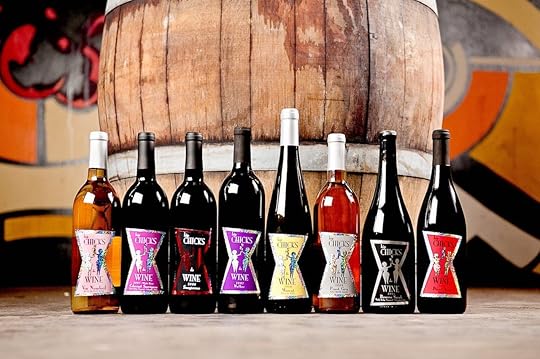
Photo: Hip Chicks do Wine/Facebook
Like most trends, urban wineries hit Portland hard when they began regaining popularity. Specializing in no-frills wine that pairs well with food, Hip Chicks do Wine stands out from the rest, showcasing Oregon’s vineyards by meddling with the grapes as little as possible.
Situated in southeast Portland near the Brooklyn neighborhood, Hip Chicks do Wine is open every day except Tuesday and Wednesday. Three wine tastings go for $10 while six wine flights cost just $5 more. You can also attend special events like the Summer Sangria Party and Pinot, Pork, and Port event in July. For even more on Portland’s urban winery scene, check out the PDX Urban Wineries Association.
Bluxome Street Winery in San Francisco, California

Photo: Bluxome Street Winery/Facebook
Before the 1906 earthquake hit, San Francisco’s wine scene was better known than that of Napa or Sonoma, where the Bluxome Street Winery gets its grapes today. Most grapes come from the Russian River Valley, which means chardonnay and delicious pinots are always on the menu. In fact, single-vineyard pinot noirs are this winery’s viticultural darlings.
Expect trendy tunes, chic decor, and all the trappings of a popular happy hour spot in the SoMa neighborhood, where most of the city’s tech bros are concentrated. Bluxome Street Winery is open daily from 1:00 to 8:00 PM, barring dates booked for private events. Drop-ins are welcome, but groups of five or more should reserve tastings in advance.
Bonus: City Winery in Chicago, New York City…

Photo: City Winery Atlanta/Facebook
…and Atlanta, Boston, Nashville, and DC. City Winery deserves a special mention simply because it has outposts in several of the country’s hottest cities. Well, that, and because it’s pretty great. What started as a hybrid winery, restaurant, and music venue in NYC has since become something of an urban winery empire that shows no signs of stopping. Grapes are imported from around the world to make the City Winery magic happen, lending to unique blends with a local touch, wherever that locale may be. Check out the website to see what tastings and special events are being held in a city near you. 

More like this: A winery is turning all of New York City into a vineyard for charity
The post Forget wine country. These are the best urban wineries in the US. appeared first on Matador Network.

Matador Network's Blog
- Matador Network's profile
- 6 followers



